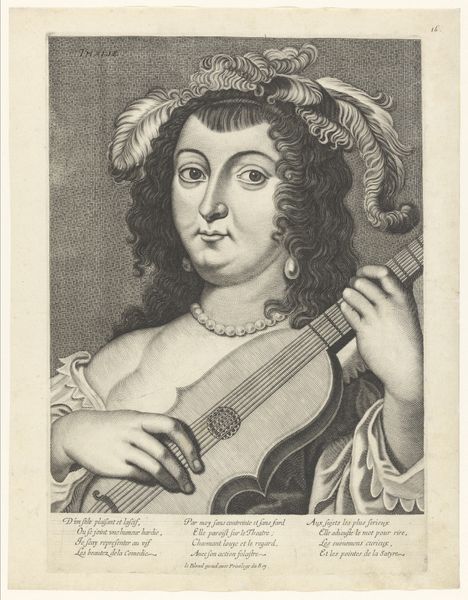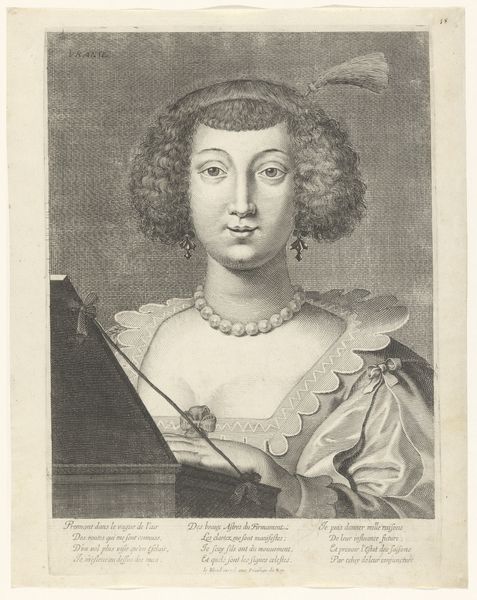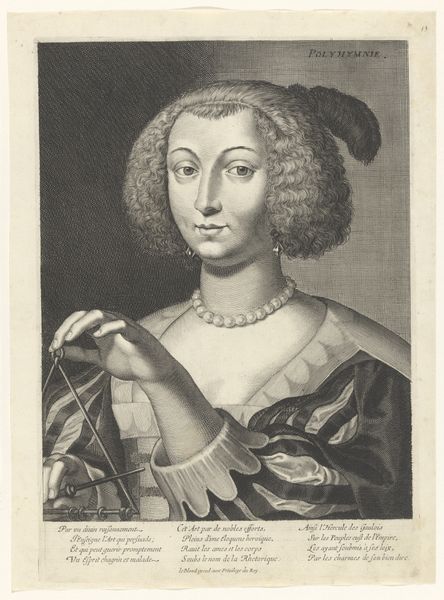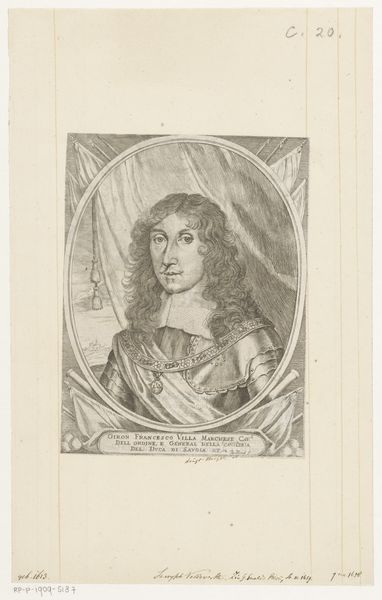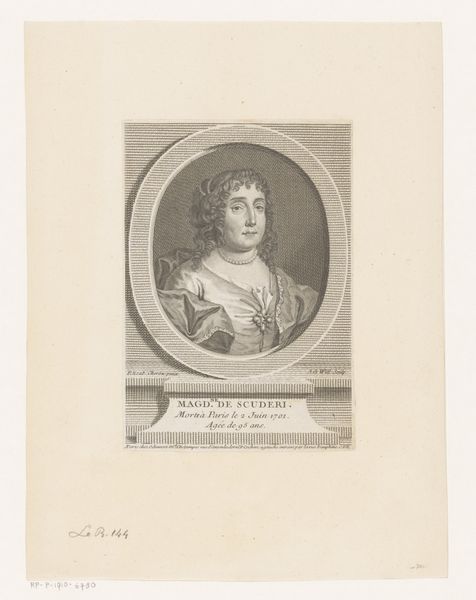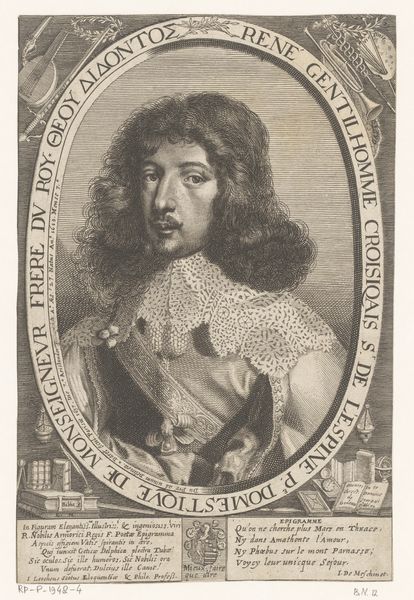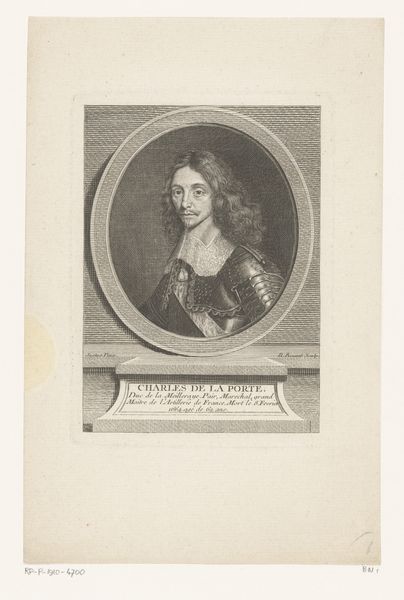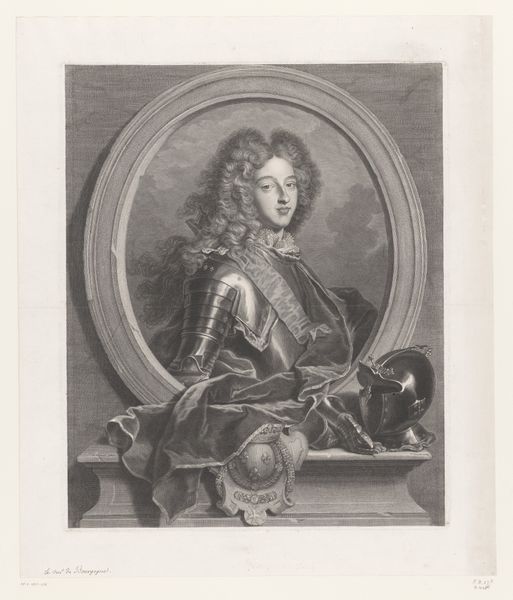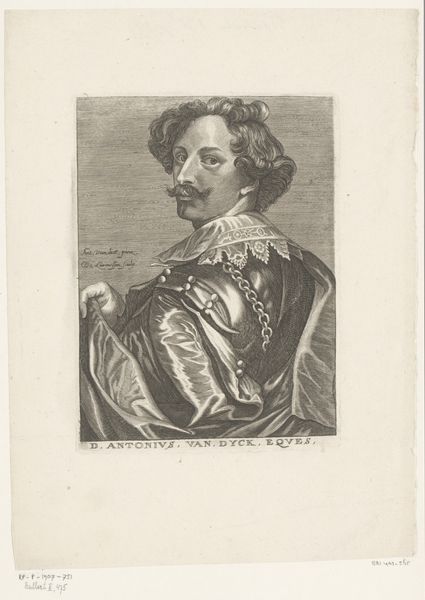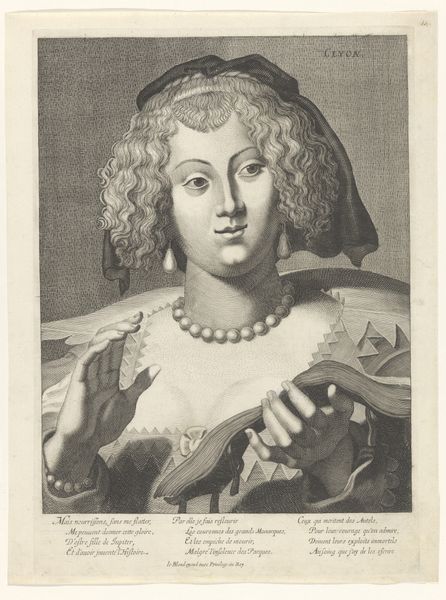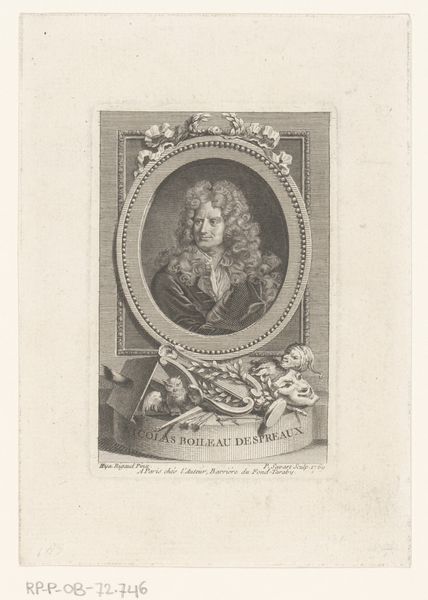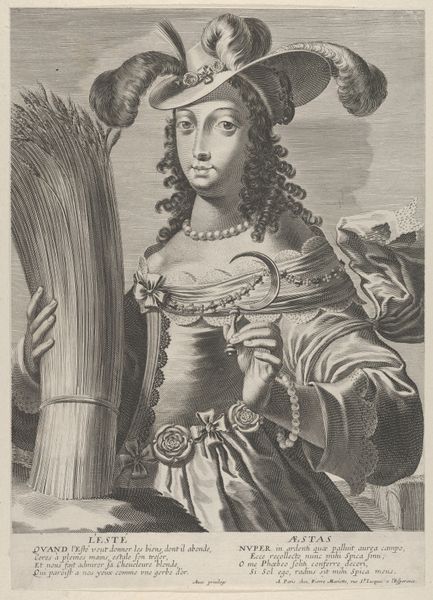
engraving
#
portrait
#
baroque
#
history-painting
#
engraving
Dimensions: height 320 mm, width 280 mm
Copyright: Rijks Museum: Open Domain
Jean Leblond’s “Terpsichore,” now at the Rijksmuseum, is an engraving that portrays the Greek muse of dance. Made in the 17th century, this piece opens a window into the cultural values of the time, particularly the era's fascination with classical antiquity and its myths. The image creates meaning through its visual codes and cultural references. Terpsichore, adorned with pearls and lace, holds what appears to be a musical instrument, hinting at the harmonious blend of art forms celebrated during the Baroque period. France, where Leblond worked, was under the influence of a monarchy that patronized the arts, shaping artistic production according to royal tastes and ideals. This engraving reflects the conservative social structures of its time. To truly understand "Terpsichore," we might turn to historical archives, literary texts, and studies of courtly life in 17th-century France. Art, after all, is contingent on its social and institutional context.
Comments
No comments
Be the first to comment and join the conversation on the ultimate creative platform.

